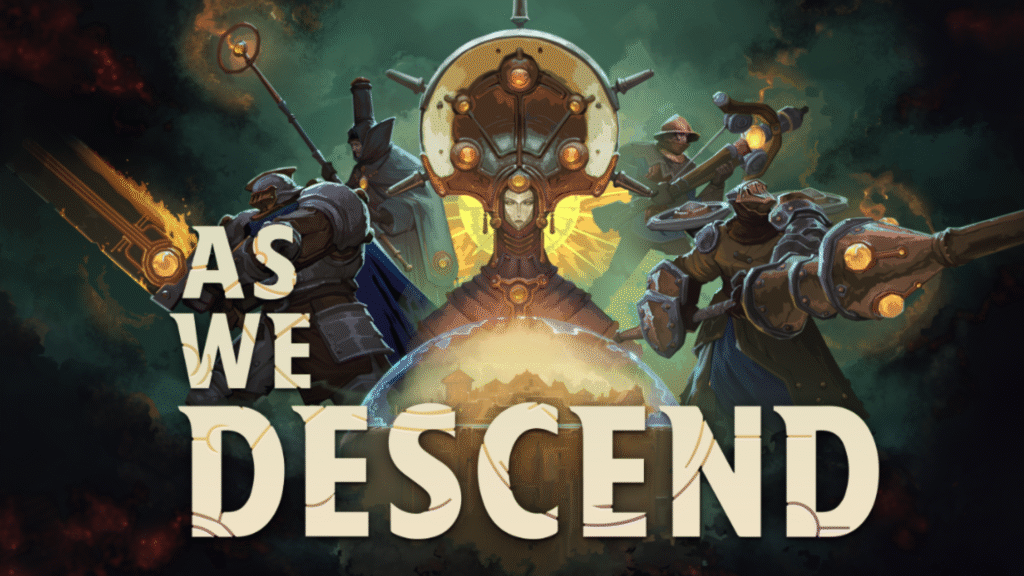The latest expedition didn’t help. My troops still need rations to heal themselves up so they can continue to fight. But every single encounter is the same – additional cards for units (though I refuse to tweak already-optimized decks), random artifacts which may or may not aid me as I struggle to close out my run. Upon my return to the city, the nobles still quarrel about who best deserves my loot which will only doom us all to another failed run. My trips to the medic have already been exhausted. I send one final envoy to one of the shadier parts of town to bargain for a healing potion.
Finally, I succeed. The nobles aren’t happy about it, but that’s a problem for the next cycle.
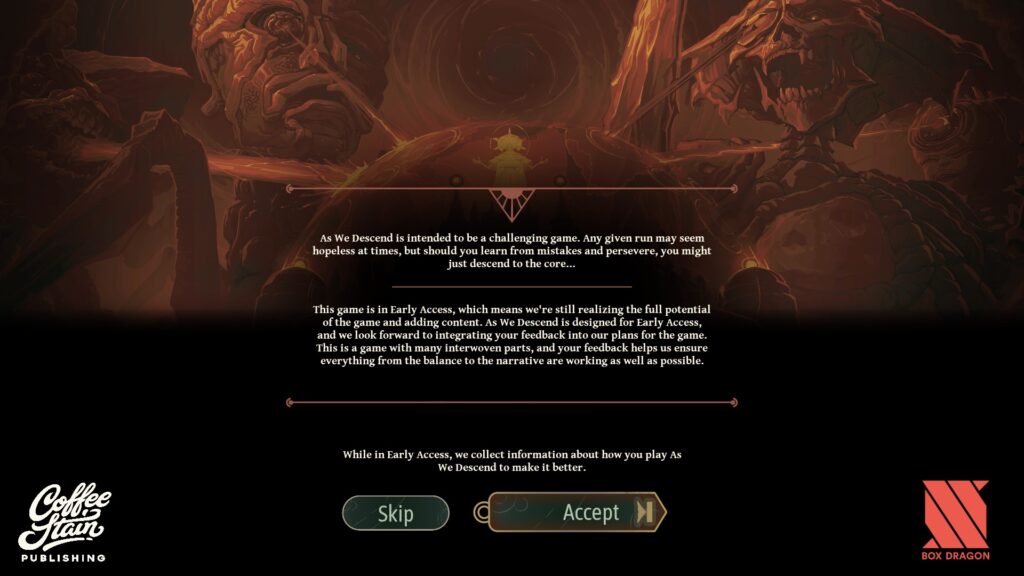
As We Descend isn’t scared to bare its fangs early. In fact, the first steps often feel the most difficult, with constricting and limited choices which could spell doom in a single click. The game instantly transports you into a steampunk city in chaos as it descends into miasma and expects you to fix everything – only armed with a deck of cards, and way too many options which never feel optimally correct.
Table of Contents
ToggleSteampunk RPG City-Builder Deckbuilder Goodness — Oh My!
In the crowded roguelike deckbuilder genre, As We Descend – developed by newcomers Box Dragon and published by Coffee Stain Publishing (Satisfactory, Valheim, the unhinged Goat Simulator series, and my new favorite, Deep Rock Galactic) — stands out from the competition with its two-pronged approach: a deckbuilder and a city-builder, in one. If this sounds confusing, let’s break down the game’s core mechanics first.
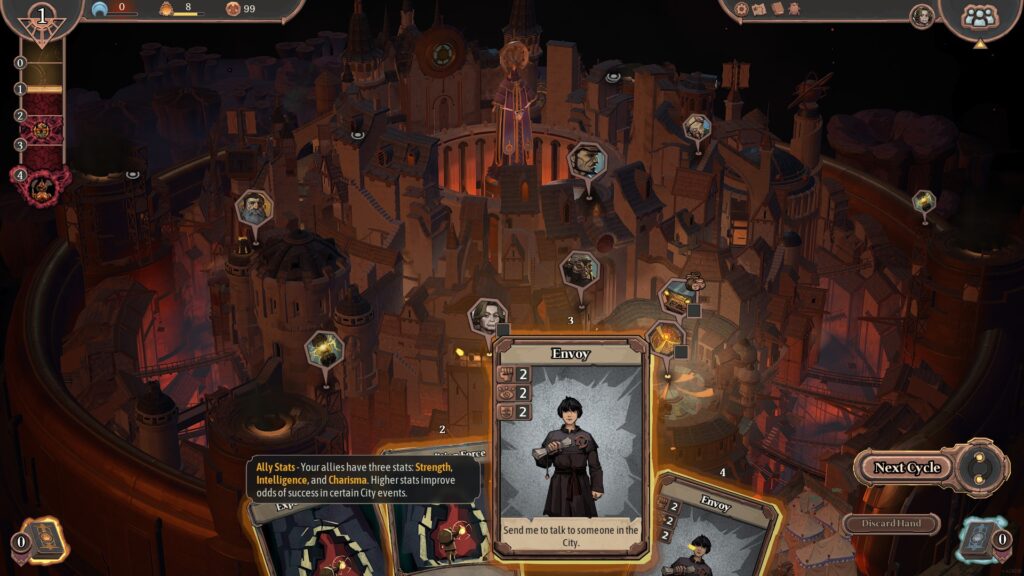
In As We Descend, we’re trying to balance to distinct decks: one we can only use in the city, filled with envoys and items we loot through combat. For instance, we can deploy envoys in taverns and other social areas to trigger events, shop openings, and other stat-based encounters reminiscent of Dungeons & Dragons‘ stat check system. The loot we collect from fights can be turned in to the city engineer to unlock new powers, or can even be traded in the black market for other boons.

The other deck corresponds to our units – each class has its own deck, similar to Cobalt Core and Trials of Fire, and are then shuffled into one during enemy encounters. As such, the game takes on two separate phases: the city-building RPG-like phase, and enemy fights when we venture out of the city walls and explore.
Clearly, the game has a breadth of options and there never seems to be an optimal one, especially for newer players.
Into the Depths
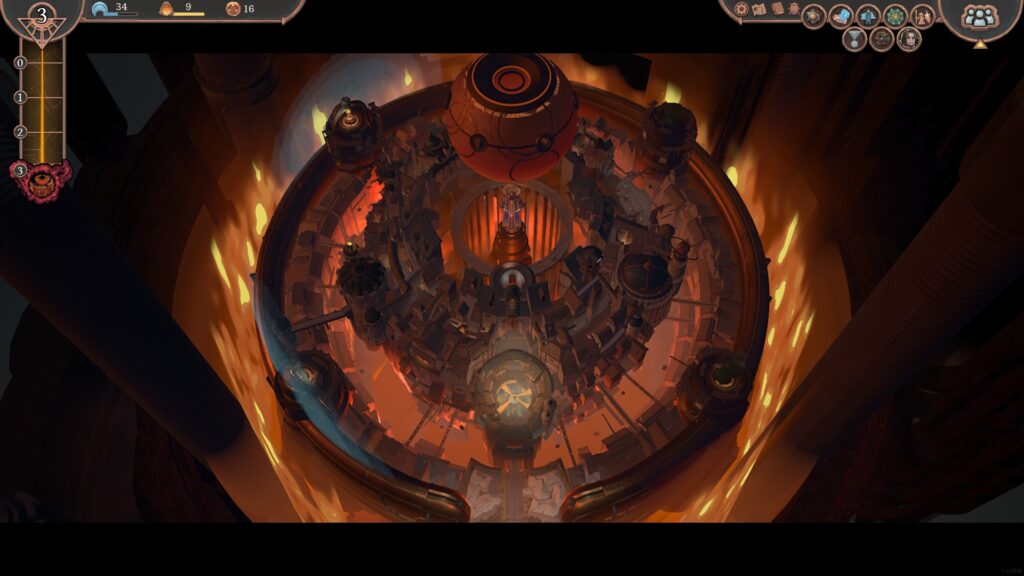
Each “floor” in the game is called a Depth, while each individual stage (of which there are four per Depth), is called a Cycle. Each cycle, our city deck is once again dealt out, which enables us to interact with the city once again, and even go on expeditions. During the final Cycle and at specific points, we need to prepare for Sieges, where we come face to face with potent bosses and minibosses.
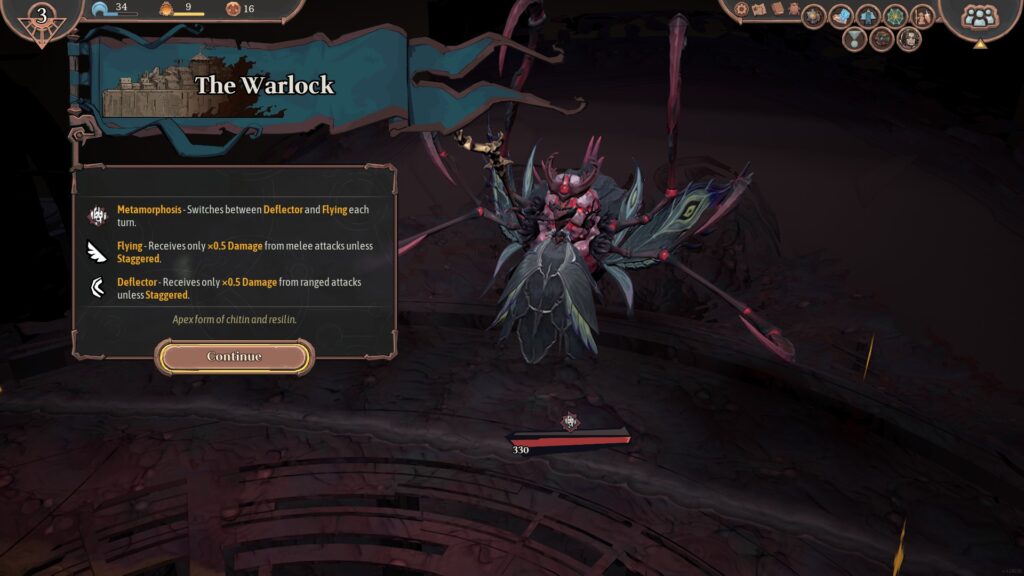
So, How’s the Combat?
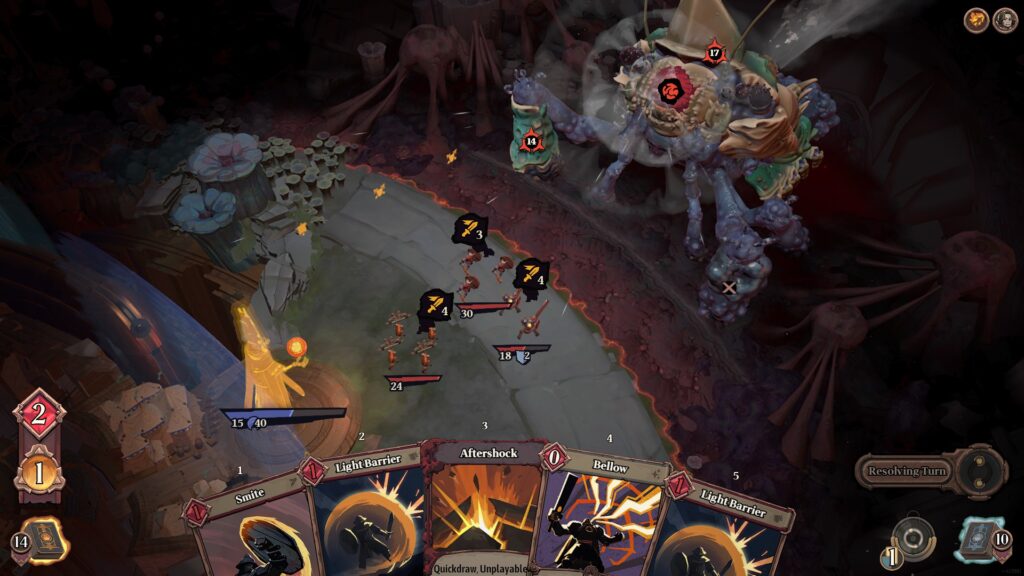
The meat and potatoes of the game comes through the Expeditions. These are the standard deckbuilder PVE encounters, where we bring our deck and smash dudes along the way, collecting loot. What’s unique here is we aren’t locked onto just one deck — we can mix and match our roster per encounter, and we can even leave out some units in exchange for better rewards.
The battlefield is made up of three levels: the vanguard, where units gain a free attack in between turns; the backline, which can only be targeted by ranged attacks; and the Lantern – one more entity in this world, which sort of acts as our commander – if it dies, our run ends.
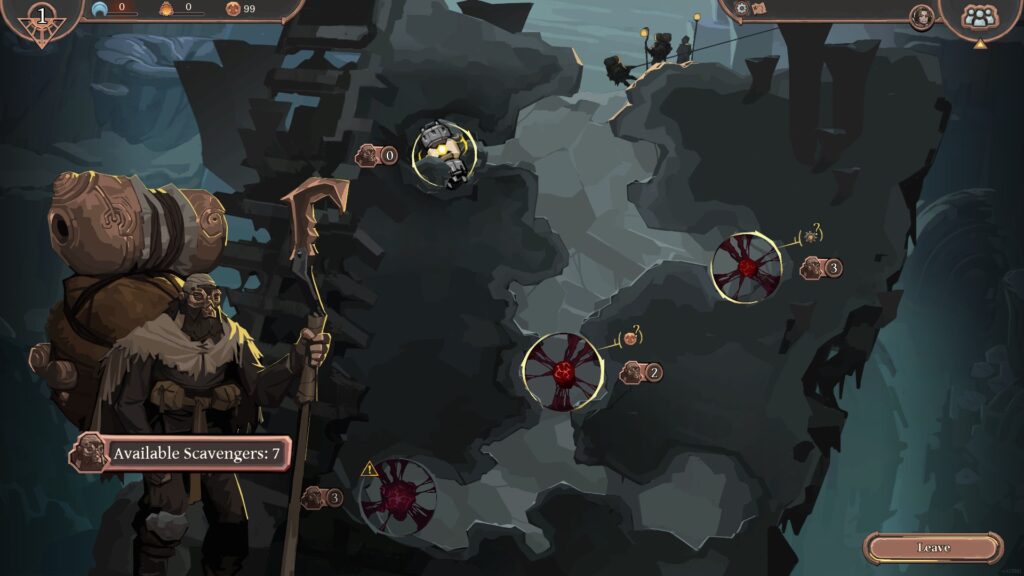
Each turn, enemies show their intent – to attack, defend, afflict status, and more – ala Slay the Spire. The more damage we deal, we can also Stagger enemy units to cancel their intents and reveal weak points — these exposed parts take more damage, so take advantage!
For the sake of brevity, there are other combat mechanics I will simplify, such as Favor being exhaustible mana points, movement cards to swap between zones, Empower being a temporary boost, and a plethora of other keywords specific for certain archetypes. Though this sounds all too complex when explained like this, the game still retains a certain elegance through its templating and keywording, which keeps card effects short and simple.
Metaprogression

As we complete (or fail) runs, we get to unlock additional units, techs and modifiers, which all bring new challenges and possibilities to the game.
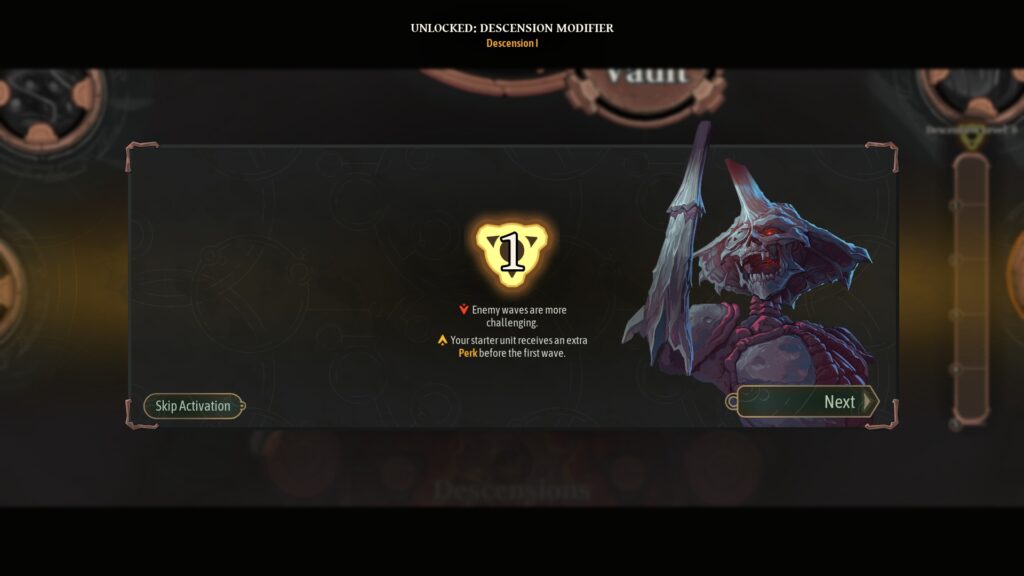
For the competitive-minded, there’s also the Descension mechanic, introducing tougher encounters and opponents to test one’s mettle and mastery.
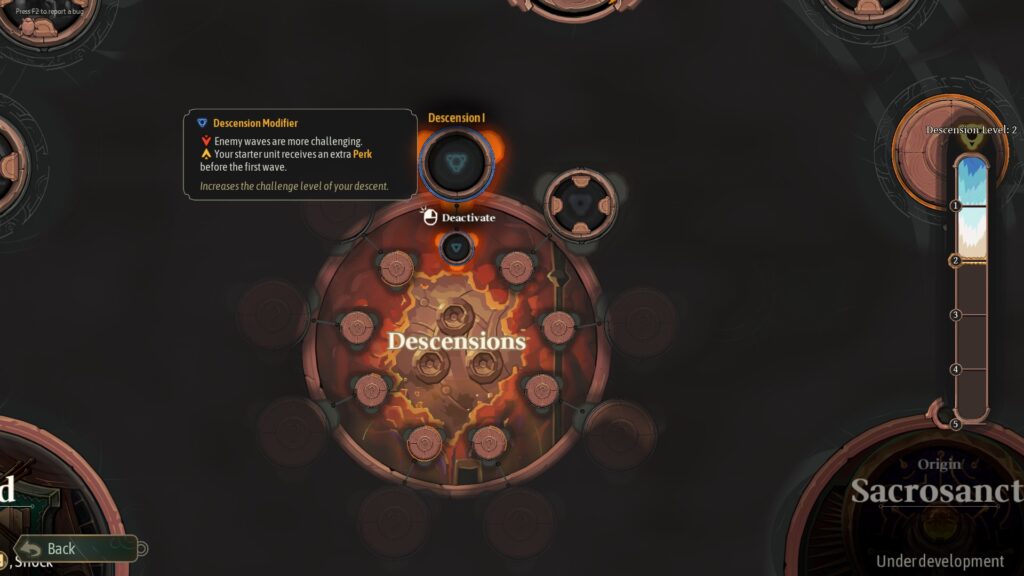
The Card Gamer Verdict on As We Descend
When I finally opened the Steam page of As We Descend, I was surprised to find out two of my friends already have it on their wishlist. These two were the same people who I consider as Slay the Spire experts and have coached me through my runs in a bid to improve and understand the game at a deeper level. So from the get go, As We Descend already left a great first impression on me – if my trusted friends have kept an eye on it, then there’s definitely something promising here.
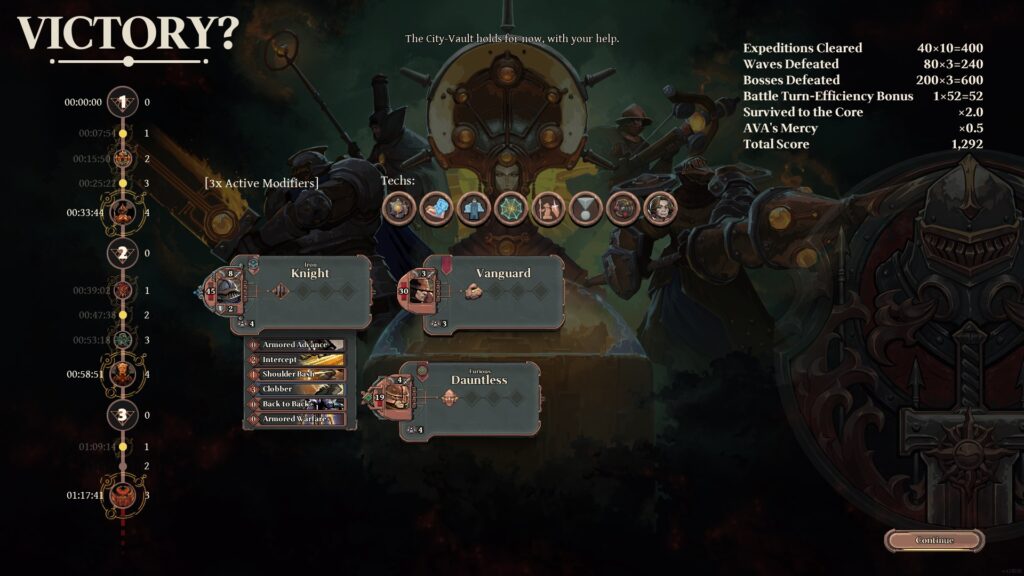
And I wasn’t disappointed — the game already has a polish not many Early Access games posses, hundreds of unlockables, a learning curve that’s obtuse but rewarding, and thousands of combinations to try out. I can’t wait for my next descent.
As We Descend is now available on Steam:

